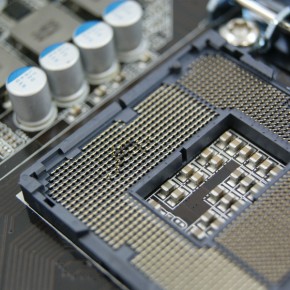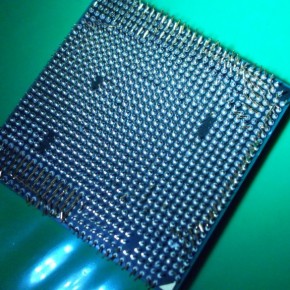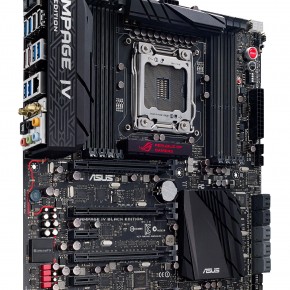Welcome back! This week I will be covering motherboards, and what you should be looking for when you are deciding on which one to buy for your build.
Budget
As always, you will want to set a budget for this part. Be aware though, that unless you are building a high-end workstation or gaming computer, you do not need to spend that much on your motherboard. To understand what you should pay for a motherboard, you will want to first understand your needs. You don’t want to pay for features you won’t use, but you also don’t want to choose a cheaper motherboard that does not have what you need.
Specifications
Socket
The socket on a motherboard is where the CPU connects to your motherboard. You may have heard about “pins” on your motherboard or CPU. These pins are located either on the CPU or in the socket itself, but either way, they are how the CPU communicates with the circuits on the motherboard. For AMD CPUs and boards, the pins are on the CPU itself, while the motherboard socket has holes that the CPU drops into. For Intel boards and CPUs, the pins are in the socket on the motherboard, and the CPU has conductive “pads” on the underside.
There are many horror stories about bent pins on your motherboard or CPU. This often happens when either you try to install a CPU that is not compatible with the socket on the motherboard, or if you simply install the CPU incorrectly, so if you are confused, double and triple check your instruction manual on how to install the CPU correctly. This is extremely important, as the pins are very fragile and can be bent without much force. Even one bent pin on a CPU or motherboard can cause your system to fail to boot. Manufacturers will not perform RMA service because of bent pins, as it is user-induced damage, so if you manage to bend a pin, it can be a very costly mistake.
Form Factor
You’ll see different listings for what form factor a given board is. Some different form factors, in order from largest to smallest are EATX, ATX, Micro ATX, and Mini ITX. If you have a case already picked out, you will want to make sure that your motherboard will fit inside of it. There will be supported motherboard form factors listed in the specifications for the case, so if you are confused, consult your owners manual.
Memory Support
Memory, or RAM, goes into slots on the motherboard called DIMMs. Motherboards can have anywhere from two slots on some small Mini ITX boards, all the way up to eight on some large LGA 2011 socket boards. All motherboards have a maximum amount of memory (RAM) that they will support. On most mid-range boards, you will often see up to 32GB of RAM supported. Motherboards also only support up to a certain speed of RAM. This isn’t a problem for most people, as almost every motherboard supports the most common speeds (1333, 1600, and 1866MHz) but if you want to buy faster RAM, such as 2133MHz or 2400MHz, you will want to make sure that your board can support up to that speed.
Chipset
The chipset on a motherboard is a set of chips that manages the transfer of data between the different parts of your motherboard (memory, CPU, video cards, etc). Intel CPUs require a specific chipset in order to overclock your CPU, so if you are looking into that, you will want to look at chipsets that are in the form of Zx7 (Z77, Z87, etc.). AMD doesn’t require specific chipsets for overclocking. There is a lot more required for an overclocking build than just the chipset, but I won’t go into the specifics at this time. If you want to learn a bit more about what is required check the forums that I have linked at the end of this article.
If you’d like to read up on specific chipsets, check out the links below:
Multiple Graphics Cards
As you might have heard, you can have multiple graphics cards in your computer, in order to try to get higher performance in graphical processes. The technology for linking the video cards together is SLI (for Nvidia cards) or CrossFire (for AMD cards). The amount of video cards that you motherboard can support in parallel is determined by your chipset. Typically, if you are planning on using a triple or quad SLI or CrossFire setup, it is best to get an LGA 2011 motherboard (and CPU of course) as the 2011 socket has additional PCI-E lanes, which will allow the cards to have more bandwidth, and will get you much better performance than on a different socket type.
Check the Specs
There are a whole bunch of other features that can come with your motherboard that you will notice when looking at different boards. Some things you might see listed could include: number of 6Gb/s SATA ports, RAID support, onboard audio chipset, onboard LAN chipset, number of USB 2.0/3.0 ports/headers, etc. If you are looking for a specific feature on a board, you will definitely want to make sure you check the specification thoroughly.
Just with any other part that you want to buy, you need to understand your needs, and your budget. Once you have that set out, you should decide what size build you want (form factor) and choose a board with the features that you want, from a manufacturer that you trust. If you are confused at what board might be good over another, you can always check the reviews on sites such as Amazon.com or Newegg.com, or you can ask some enthusiasts in the following forums:
Tom’s Hardware forums
r/buildapc reddit forum
Linus Tech Tips forums






